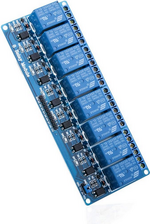Jadeit
Member level 5
I need to control 6 solenoids 5W 12 or 24V each. A maximum of 3 can be connected at the same time.
So far we have only used a 24V solenoid so I used the TPL7407L
Unfortunately, 12V solenoids require twice that current and the TPL7407L cannot be used.
Is there any transistor array with lower RdsON transistors?
So far, I designed an AO3422 + 2 resistors and 1 diode for each channel, but instead of one IC, it's 24 components.
Thanks
So far we have only used a 24V solenoid so I used the TPL7407L
Unfortunately, 12V solenoids require twice that current and the TPL7407L cannot be used.
Is there any transistor array with lower RdsON transistors?
So far, I designed an AO3422 + 2 resistors and 1 diode for each channel, but instead of one IC, it's 24 components.
Thanks
